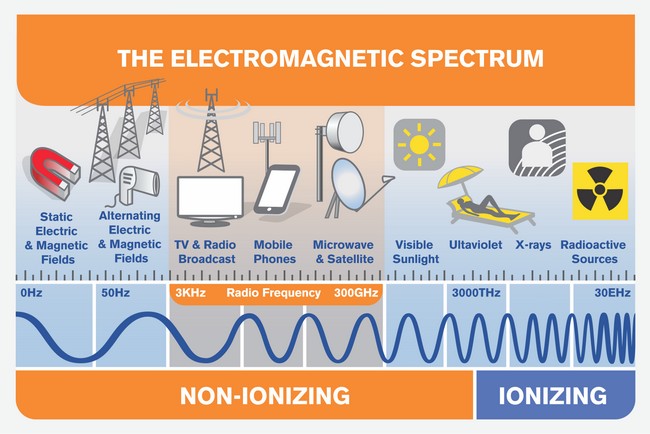- 5G – the 5th generation of mobile technologies – is an evolution from the previous generations of mobile technology: 2G, 3G and 4G.
- 3G, 4G and 5G networks produce radio-frequency electromagnetic fields which are used to transmit information.
- Despite extensive studies into the health effects of mobile phones and base stations over the last two or three decades, there is no indication of an increased health risk when exposed to electromagnetic fields below the levels specified by international bodies.
- For all radio frequencies (0 to 300 GHz), international maximum levels are designed to avoid any adverse health effects.
- ITU does not set maximum levels of exposure of the public to electromagnetic fields. These levels are set by competent bodies and ITU in turn references their standards and recommendations in its relevant ITU Recommendations.
- Countries (ITU Member States) are sovereign and set their own national standards for exposure to electromagnetic fields. Most countries draw on the ITU Recommendations.
5G - 5th generation of mobile technologies
Mobile, or wireless, technologies - mobile phones, tablets and other wireless devices - have become basic communication tools of everyday life. They enable billions of people around the world to listen to the radio in their cars, watch free-to-air television programmes at home, travel safely in cities and around the globe and stay connected. For many on this planet, mobile is the primary — sometimes only — channel for accessing the Internet and the benefits it brings.
5G – the 5th generation of mobile technologies – is an evolution from the previous generations of mobile technology: 2G, 3G and 4G. 4G systems, for example, have opened a new era for mobile Internet, enabling many apps-based businesses used for such services as m-Learning, m-Health and mobile money.
5G, referred to by ITU as IMT-2020, is seen as opening yet another new era, supporting applications such as smart homes and buildings, smarter and cleaner cities, self-driving cars and road safety, other intelligent transport systems, 3D video, work and play in the cloud, remote medical services, virtual and augmented reality, and massive machine-to-machine communications for industry automation and manufacturing. 3G and 4G networks currently face challenges in supporting these services.
Mobile technologies and human health
Together with the introduction of mobile communication technologies, there has been some public concern about the potential health risks associated with the use of mobile phones and living near base stations.
3G, 4G and 5G networks produce radio-frequency electromagnetic fields which are used to transmit information. Electromagnetic fields have been around in different forms since the birth of the universe. They differ from each other by frequency and visible light is its most familiar form.
For all radio frequencies (0 to 300 GHz), international maximum levels are designed to avoid any adverse health effects.

Despite extensive studies into the health effects of mobile phones over the last two or three decades, there is no indication of an increased health risk when exposed to electromagnetic fields below the levels specified by international bodies.
There is no evidence that electromagnetic fields from existing (2G, 3G and 4G) mobile networks pose any health risks, provided that administrations enforce the exposure limits established by international bodies.
There is no scientific basis of any relation between the transmission of the coronavirus and 4G or 5G or any other electromagnetic waves.
Who regulates the exposure to EMF?
ITU does not set maximum levels of exposure of the public to electromagnetic fields. These levels are set by competent bodies and ITU in turn references their standards and recommendations in its relevant ITU Recommendations.
Countries (ITU Member States) are sovereign and set their own national standards for exposure to electromagnetic fields. Most countries draw on the ITU Recommendations.
Two main bodies have issued radio frequency exposure guidelines:
